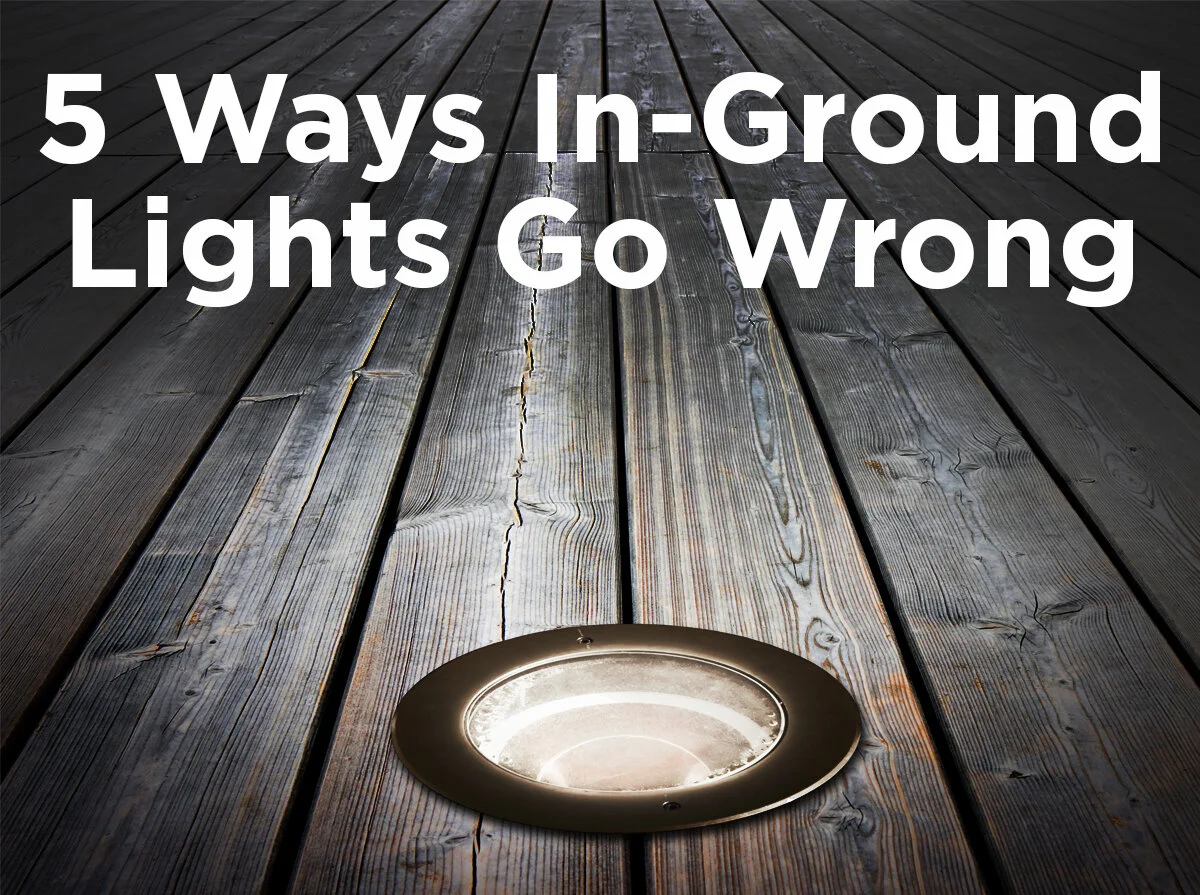5 Ways You’re Using LED Flood Lights Wrong
LED flood lights are broad-beamed lights with a variety of uses both residential and commercial. With a large range of lumen outputs available, flood lights are popular for security lighting, landscape lighting, and outdoor sports venues in addition to stage lighting for concerts and plays. However, a brighter, more energy-efficient light doesn’t guarantee maximum illumination. Whether you’re using flood lights for your home or business here are five ways you might be under-utilizing your flood lights and how to make them more effective.
1. Your Lights Are In the Wrong Place. A flood light mounted dead center above your garage will definitely illuminate your driveway. However, you can mount flood lights in eaves of the sides and rear of your house with motion sensors for added visibility and security. While it’s a mark of good design to have your lights evenly spaced out, shadows and dark areas in between fixtures might mean your lights spaced too far apart. On the flip side, fixtures placed too close together can cause unnecessary glare as well as wasted light. You want your path, sidewalk, parking lot, security lighting, or even your business signage to be uniformly lit, without bright or dark spots. It’s important to flood the area with evenly distributed light, especially for security cameras or where people will be driving.
2. You Forget to Turn Your Lights On or Off. With built-in motion sensors, the lights will only turn on if motion is triggered near the light. If you want the light to turn on sooner, consider installing your motion sensor in a corner closer to the front of building. This will trigger the motion sensor earlier rather than half way down the wall. For more options, you could wire an override switch to manually turn the lights on and off. A photocell or automatic timer could also be installed to control the outdoor lights so that they turn on and off at specified times. Photocells should be installed at the best angle to catch changes in light as the sun sets and rises. Keep in mind, any extra controls like photocells or motion sensors may not be able to be installed directly on your flood light fixture. Therefore, you may have to mount these devices separately.
3. Your Lights Are In the Wrong Position. You may think that mounting a flood light is as simple as finding a sturdy place to drill into. Positioning your fixture as an uplight or downlight is easy, but you can achieve more dynamic lighting using fancier techniques. Moonlighting is a downlight effect that places lights high up to simulates rays of the moon’s soft glow. Silhouetting is all about outlines, where the light is positioned upwards underneath an object. Shadowing uses the wall washing effect, but the focus is on the object in front of the wall rather than the wall itself.
4. You Have Too Many Lumens. Brighter isn’t always better. Because you want to space the fixtures out for even illumination, you can use fixtures with lower lumens than you might think. If your flood lights are bright enough to land a commercial airplane, it’s time to reconsider. As a home owner, you don’t need to light up your whole yard, instead highlight trees, shrubs, or even the texture of your home’s exterior. At most, this requires about 5,000 to 7,000 Lumens focused on select features and the entrances to your home. Mini LED flood fixtures are small enough to showcase your garden fountain. Larger fixtures with higher Lumen outputs can illuminate broad sections of walls and objects. Save those 40,000-Lumen flood lights for the sports arena.
5. You Can’t Get Your Remote to Work. When the remote to your outdoor lighting system won’t work or is sporadic at best, the problem could be caused by frequency interference. If you are using wall washing or wall grazing techniques with plain white light or color-changing RGB LED flood lights, they could be using either infrared (IR) or radio frequency (RF) remotes. RF remotes can operate through walls and furniture, but if the frequency is the same as other electronics, you may experience interference. IR remotes, although more popular because they are less expensive, can’t operate through walls and objects; they must have line-of-sight with the receiver or flood light.
If you have more tips using flood lights or just want to chat about your outdoor lighting setup, leave a comment below. You can find more lighting ideas and advice by connecting with us on Facebook, Twitter, LinkedIn, or Pinterest. Call 1-800-624-4488, where our 1000Bulbs.com staff is available, Monday through Friday, 7am to 7pm CST, to provide you with solutions to your everyday lighting problems.










